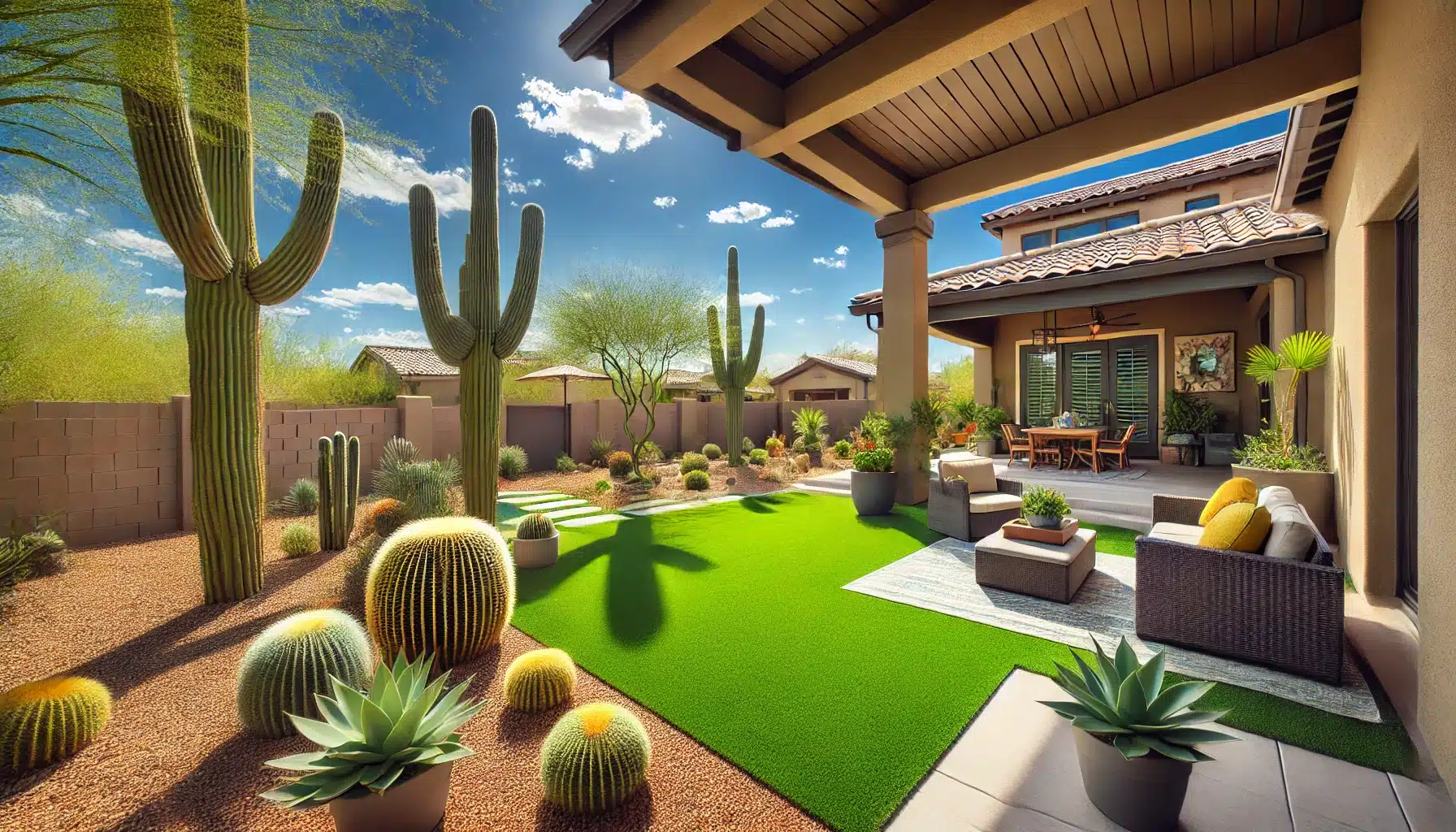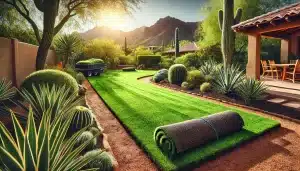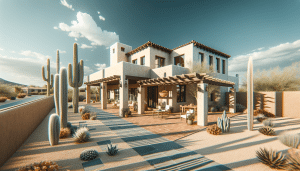As the climate in Arizona becomes more arid and water conservation becomes increasingly important, many homeowners are turning to artificial turf as a practical alternative to natural grass. At Red Mountain Landscaping, we understand that choosing between artificial turf and natural grass is a significant decision that requires careful consideration. In this blog post, we’ll explore the pros and cons of artificial turf to help you make an informed choice for your landscaping needs.
Contents
The Benefits of Artificial Turf
1. Water Conservation
One of the most significant advantages of artificial turf is its ability to conserve water. Unlike natural grass, artificial turf does not require regular watering, making it an excellent option for drought-prone areas like Arizona.
- Water Savings: Artificial turf can save thousands of gallons of water each year, reducing your water bill and conserving a precious resource.
- Sustainability: By using less water, artificial turf contributes to environmental sustainability and helps mitigate the effects of drought.
2. Low Maintenance
Artificial turf requires significantly less maintenance compared to natural grass. This can be particularly appealing for busy homeowners who want a beautiful lawn without the hassle of constant upkeep.
- No Mowing: Say goodbye to the weekly chore of mowing the lawn.
- No Fertilizing: Artificial turf does not require fertilizers or pesticides, reducing the amount of chemicals used in your yard.
- Minimal Upkeep: Occasional rinsing and brushing are usually all that is needed to keep artificial turf looking its best.
3. Durability and Longevity
Artificial turf is designed to withstand heavy use and harsh weather conditions, making it a durable choice for your landscape.
- Resilience: Artificial turf can handle heavy foot traffic, making it ideal for families with children and pets.
- Longevity: With proper care, artificial turf can last up to 15-20 years, providing a long-term landscaping solution.
The Drawbacks of Artificial Turf
1. Initial Cost
One of the main drawbacks of artificial turf is the initial installation cost. While the long-term savings can be substantial, the upfront investment can be a deterrent for some homeowners.
- Installation Costs: Professional installation of artificial turf can be expensive, ranging from $5 to $20 per square foot.
- Material Costs: The quality of the turf can also affect the overall cost, with higher-quality materials being more expensive.
2. Heat Retention
Artificial turf can become significantly hotter than natural grass, especially in the intense Arizona sun. This can make it uncomfortable to walk on during the hottest parts of the day.
- Heat Buildup: Artificial turf can retain heat, sometimes reaching temperatures up to 50 degrees hotter than natural grass.
- Potential Solutions: Cooling infills and regular watering can help reduce the surface temperature of artificial turf, but these solutions may add to the maintenance requirements.
3. Environmental Impact
While artificial turf conserves water, it is not without its environmental drawbacks. The production and disposal of synthetic materials can have a negative impact on the environment.
- Plastic Waste: Artificial turf is made from synthetic materials that contribute to plastic waste when it is eventually replaced.
- Non-Biodegradable: Unlike natural grass, artificial turf is not biodegradable, which can be a concern for environmentally conscious homeowners.
Factors to Consider Before Choosing Artificial Turf
1. Purpose and Use
Consider how you plan to use your outdoor space. If you have children or pets, artificial turf may offer a more durable and low-maintenance option compared to natural grass.
- Family Use: Artificial turf is ideal for play areas and high-traffic zones.
- Pet-Friendly: Many types of artificial turf are designed to be pet-friendly, with features such as odor control and easy cleanup.
2. Aesthetic Preferences
The appearance of your lawn is an important factor in your decision. While modern artificial turf is designed to look and feel like natural grass, some homeowners may still prefer the authenticity of real grass.
- Realistic Appearance: High-quality artificial turf can closely mimic the look and feel of natural grass.
- Color and Texture: Consider the color and texture options available to find a product that best matches your aesthetic preferences.
3. Climate and Environment
The climate in your area can greatly influence the performance and maintenance requirements of artificial turf.
- Arizona Climate: Artificial turf can thrive in the hot and dry conditions of Arizona, reducing the need for irrigation.
- Local Regulations: Check local regulations and homeowner association rules regarding the use of artificial turf in your area.
Conclusion: Making the Right Choice for Your Landscape
Choosing between artificial turf and natural grass is a personal decision that depends on your individual needs and preferences. At Red Mountain Landscaping, we are here to help you weigh the pros and cons and find the best solution for your outdoor space. Whether you prioritize water conservation, low maintenance, or aesthetic appeal, artificial turf can be a valuable addition to your landscape.
For more information on how artificial turf can benefit your home, and to discuss your specific landscaping needs, Request a Free Quote from Red Mountain Landscaping today. Our team of experts is ready to assist you in creating the perfect outdoor environment for your Arizona home.




